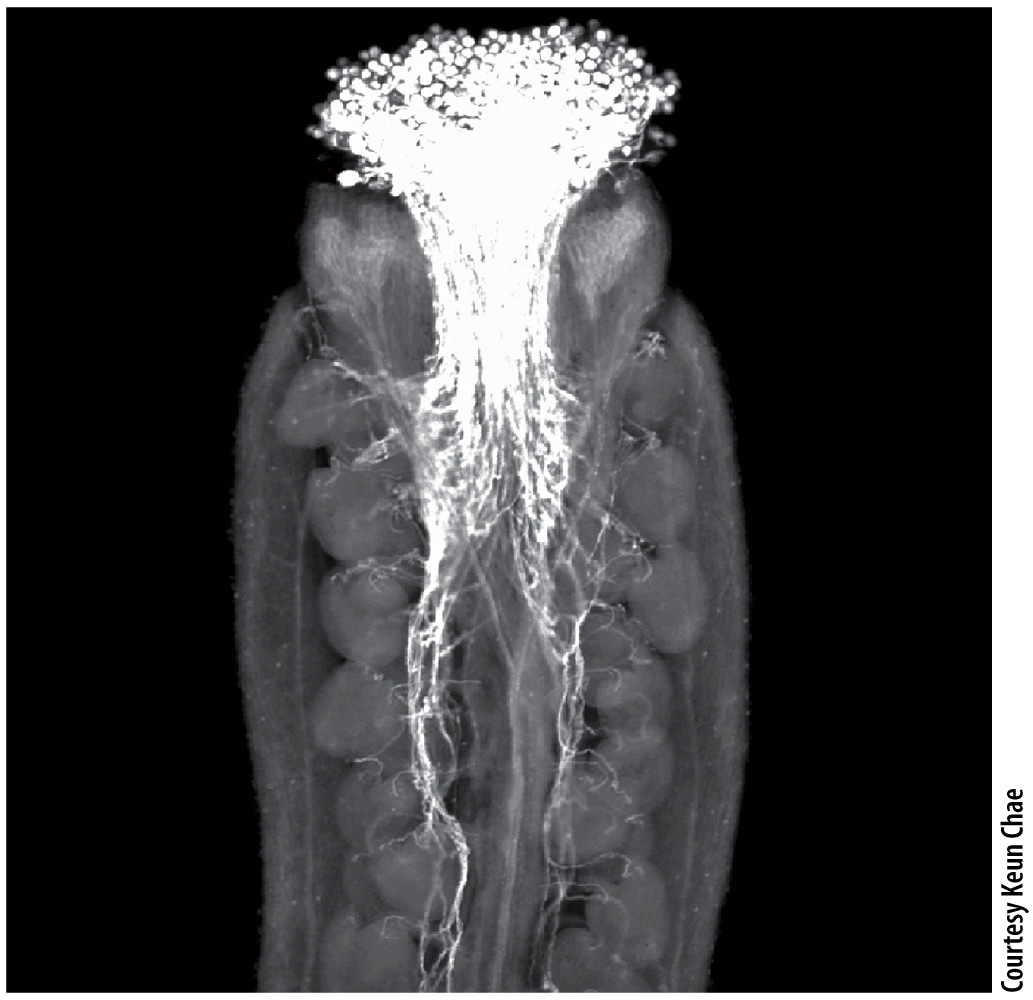Angiosperms have mechanisms to increase outcrossing.
When pollen is deposited onto a stigma, the pollen must germinate and form a pollen tube that grows down through the style before fertilization can occur (Fig. 30.17). Typically, only pollen from the same species will germinate and grow successfully, thus preventing gametes from two different species from coming into contact.

FIG. 30.17 Germination and growth of pollen tubes. The pollen tubes of Arabidopsis thaliana can be seen here because they have been stained with a fluorescent dye.
Plants do not have the elaborate courtship rituals that many animal species use to select an appropriate mate. Nevertheless, angiosperms have a wide range of mating systems. At one extreme are self-compatible species in which gametes from male (pollen) and female (ovules) gametophytes produced by flowers on the same plant can form viable offspring. Self-compatible plants can reproduce even when they are physically isolated from other individuals of the same species or when pollinators are rare. Many weedy species and the majority of crops are self-compatible.
At the other extreme are species in which pollen must be transferred between different plants. Approximately half of all of angiosperm species are self-incompatible, meaning that pollination by the same or a closely related individual does not lead to fertilization. Self-incompatible plants must be able to recognize that a gamete comes from a closely related individual. Self-recognition is based on the proteins produced from self-incompatibility genes, or S-genes. If the pollen’s proteins match those of the carpel, the pollen either fails to germinate or germinates but the pollen tube grows slowly and eventually stops elongating. S-genes may have originated as a defense against fungal invaders but subsequently evolved as a means of promoting outcrossing. Because there can be dozens of S-gene alleles in a population, only pollen transfers between closely related individuals are blocked. Apples are examples of self-incompatible plants, so apple orchards always contain a mixture of different varieties.
